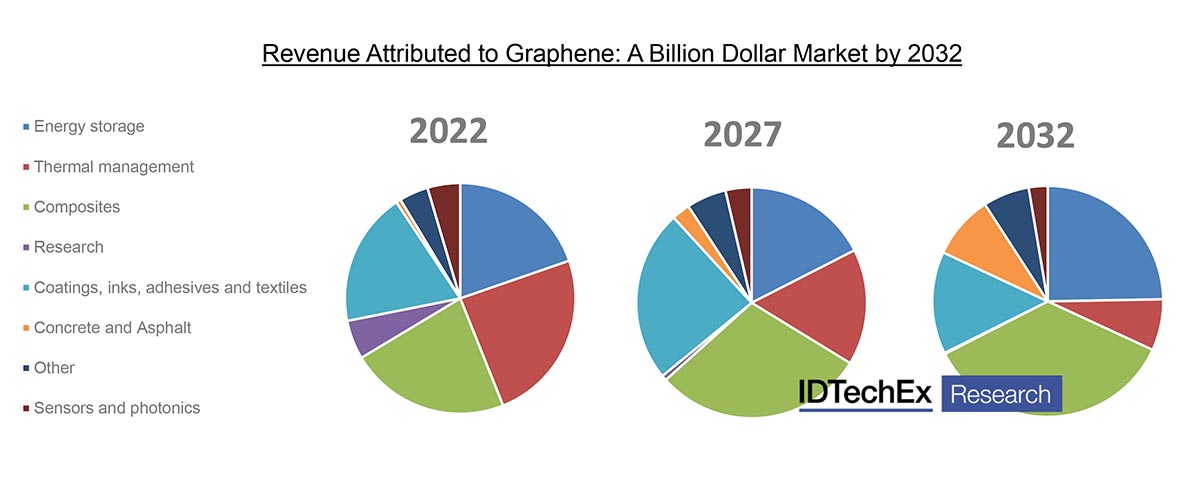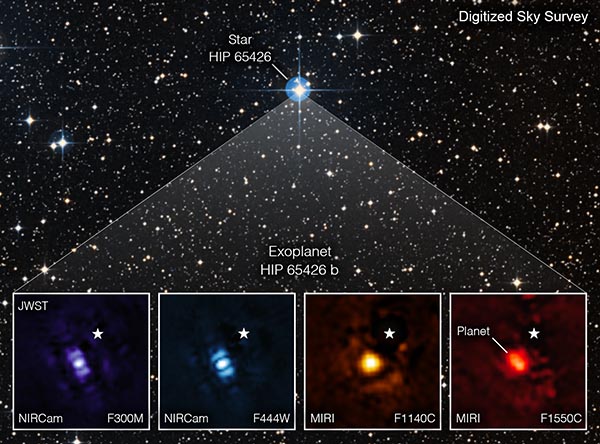Graphene Chickens and Eggs
Was it a good week for graphene news? It’s always a good week for graphene news! Or, well, sort of. IDTechEx reports, in their new market study, “Graphene Market & 2D Materials Assessment 2023-2033, that the global supply of graphene exceeds demand. “As of mid-2022, the global graphene and graphene oxide installed capacity easily exceeds 12,000 tonnes per year, but utilization is low as the orders lag significantly behind,” they say, adding, “Is this a natural part of the commercial journey, or has hype overcome reality? Is this a case of ‘build it, they will come’, or are there real market needs?”
For a long time, the graphene industry would cite a "chicken and egg" scenario: large demand for their material but limited scale and challenges investing in high volume production without orders or revenue. This has now been broken, IDTechEx has tracked this industry in detail for over a decade and can report that there is extensive capacity, but huge orders haven't materialized.
Hmm…graphene-based chickens and eggs may be on the horizon. However, they do point out:
Firstly, it should be acknowledged that graphene related materials are a very broad family, from graphene oxide (GO) and reduced graphene oxide (rGO) to Few-layer graphene (FLG), graphene nanoplatelets (GNP), CVD graphene films, and more. This article will just focus on rGO and GNPs, but even within that, there is a huge amount of variation from lateral size, number of layers, purity, surface area, and this is before we talk about functionalization, the inclusion in intermediates, and the commercial side, specifically cost and price. So, although there may be a large installed capacity it may not be in the type of graphene desired.
… The key question is about demand. As has always been the case, graphene maintains an extensive list of potential applications at various stages of market entry and penetration; although not immediately apparent, orders have been arriving, and sales have been rising. The slow pace is not surprising, each industry takes time to assess the graphene products on the market, test and validate the use-cases, and evaluate the value-add all before engaging in any notable commercial adoption. Taking the bigger picture, the applications where there is a good promise and the potential for the highest sales in the long term are energy storage, polymer composites, and concrete. There will be other success stories with reasonable revenue, such as in textiles, filtration membranes, coatings, and thermal management, but it is these three use cases that, if graphene were to be meaningfully adopted, can generate sales in the tens of thousands of tonnes and would redraw the commercial landscape.

Source: IDTechEx “Graphene Market & 2D Materials Assessment 2023-2033”
They sum up: “The graphene market is traveling through an inflection point. The industry will look significantly different in 10 years’ time, even more so than comparing the market today to 2012.” The report may be worth checking out for, as they say, an “unbiased look” at the graphene market. For a completely biased, gung-ho-graphene perspective, keep tuning in to Around the Web.
AI-Yi-Yi, Part the Infinity: Unfair Competition?
Here’s a story highlighting an issue we are probably going to be seeing more and more of. From Gizmodo:
Jason Allen, CEO of tabletop game company Incarnate Games, submitted his piece, titled Théåtre D’opéra Spatial, to the Digital Arts/Digitally-Manipulated section of the Colorado State Fair Fine Arts competition, and he won. The sci-fi-esque piece features a figure in a white dress that appears to be standing in front of a massive circular window—almost like something from Denis Villeneuve’s Dune with a dash of The Foundation…
OK, so far, so good. But then: “[it] was generated using an AI engine from Midjourney.” Shockingly, there were people on the Internet who were not happy.
TL;DR — Someone entered an art competition with an AI-generated piece and won the first prize.
— Genel Jumalon ?? ARTapalooza Cedar Falls (@GenelJumalon) August 30, 2022
Yeah that's pretty fucking shitty. pic.twitter.com/vjn1IdJcsL
Now, the Colorado State Fair Fine Arts competition guidelines defines “Digital Arts” as an “artistic practice that uses digital technology as part of the creative or presentation process”—pretty much what Allen did, right? But at issue is whether AI is a bit beyond the loose term “digital technology.”
Gizmodo writer Kevin Hurler raises the salient point:
I think the question is less of whether or not Allen deserves his award, and instead one of where we draw the line with artificial intelligence in the arts. While Allen relied on AI from Midjourney to develop his piece, other artists may have used a tool like Photoshop—which features plenty of AI tools in its toolbox for image editing.
Back in the 1990s, when the first generation of digital artists appeared, using such cutting-edge technologies as Photoshop and Illustrator—on a *gasp* computer—it was roundly pooh-poohed and thought of as “cheating” in some way. (You try creating an original piece of art in Photoshop or Illustrator and see how much like cheating it is!) Still, it will probably fall to arts competitions to clearly decide and define what is acceptable vis-à-vis using AI in art.
Snake on a Bus
Boing Boing flashes back to a 2010 story about a clever—if potentially horrifying—bus wrap project in Copenhagen, designed by Peder Schack of the Danish firm Bates Y&R for advertising campaign for a local zoo.

Photo courtesy Bates Y&R
Some Copenhagen commuters refused to get on the snake bus. Some Japanese tourists were so entranced they ignored their guide to photograph the bus, a colleague told him.
Even worse news for Danish commuters:
[The campaign was] such a success that Schack and his team turned four subway cars into a rolling zoo recently, with snakes on the floor, monkeys hanging out the windows and lions climbing the seats.

Photo courtesy Bates Y&R
Although, to be fair, we’ve seen worse things on subway floors.
Paper House
Are you a fan of the Tim Burton animated movie Nightmare Before Christmas? And paper? If yes, check out this MechanicalFiend video in which Devon attempts to recreate Jack Skellington’s house using little more than different paper grades.
Colorful Language
Have you ever noticed that “red hair” really isn’t red? Or animals like the “red fox” or the “red deer” are more orange than red? This is because for a long time, there was no word for the color orange, and “red” had to suffice until someone took a long hard look at an orange (the fruit) and said, “Hey, we should name the color after this.” Which is a good thing, otherwise the SU sports teams would have been called the Syracuse Red (posing problems back in the 1980s when SU were the Syracuse Orangemen and St. John’s were the Redmen) and the popular gym chain would be called “Red Theory.”
Anyway, if you’ve ever wondered about the etymology of the words we use for colors, this interesting video. Perhaps the first “color” word that was coined dates from around 4,000 years ago and the proto-Indo-European word “*bhleg-“ which referred to burning. The later proto-Germanic word “blakaz” also meant burned—and what color is something when it is burned? Black.
And you may have hard the claim that the ancient Greeks had no word for blue. This is true, as it is a color that doesn’t really occur in nature or at least among plants and animals (exotic birds and tropical fish were still largely unknown to the ancients). And while the sea and sky are conspicuously blue, if you’ve ever read The Odyssey you know that Homer consistently referred to the sea as “wine-dark” and the Ancient Greeks referred to the sky as “bronze” due more to its shininess than its hue.
Anyway, it’s a fascinating 15-minute etymological deep dive that blue blew our minds.
Tuscan Raider
Here in the Around the Webb Cultural Accretion Bunker, some months ago we started listening to a podcast called “The Play’s the Thing,” which takes an act-by-act deep dive into each of Shakespeare’s plays. The discussion of The Tempest, which features shipwrecked characters from several of Italy’s city-states (before Italy became a unified country), included an interesting tidbit about how it was thanks to Dante that there emerged a single Italian language. We delved further, and found this discussion from Italy Explained of how a regional dialect became a full-fledged language.
Back before there was fast and easy travel and mass communications media, different parts of a country were generally isolated from each other and would have their own regional languages—what we might now call “dialects.” Case in point: Italy.
When modern-day Italy was a collection of independent city-states, each had its own language. Many survive to this day, although now we call them dialects – local vernacular that is often related to the official language in some way.
One of these was Tuscan and it was spoken (and, more importantly, written) by a local poet named Dante Alghieri (c. 1265– September 14, 1321)
Dante’s poems, based on the Tuscan dialect, were widely read – well beyond the borders of his native Tuscany. The “Divine Comedy” was not translated into every dialect – rather, it was considered a sign of one’s educational status to be able to read the original text. And because the upper classes in every region were reading Dante’s work, his dialect became the one most widely understood throughout the peninsula. Dante is considered, therefore, the father of the Italian language as we know it today.
So by the early 14th century, Italian was starting to become a national language—although there really was no nation until Italy was unified in 1861. Despite this, it was only formally adopted in the constitution as the national language of Italy in 2007.
We mention this because we can think of one other example of a regional dialect becoming a national language thanks to books—and, in this case, printed books. We’re talking of course about William Caxton, who installed the first printing press in England in 1476 near Westminster Abbey. At the time, there was no standardized English spelling (it could be argued there still isn’t), so when Caxton chose to print books in English, the version of English he chose to typeset—the version used by the government and the court (no fool he)—eventually became the standard.
Get a Charge Out of Trees
Could this be the future of electric vehicle (EV) charging? (Although we are still wrestling with the present of EV charging.) SolarBotanic Trees unfurled their prototype “solar tree.” Says Electrek:
The SolarBotanic energy tree, which features what the company says is the “world’s first” 3-D leaf-shaped photovoltaic nanotechnology, utilizes thin-film solar cells and has a power generation capacity of 5 kilowatts.
… The company has designed the solar trees to feed harvested power into an AI-driven energy storage and management system (EMS). That EMS will regulate and release the power.
… The company’s target market will first be “rapid electric vehicle charging market for homes, businesses, and commercial car parks.” The solar tree can be linked and can form part of a local grid, or it can feed into the main grid.

Obviously, that’s a mock-up showing their basic concept. Although, if the cords were longer, you could park hood-in and use the tree to shade the windshield.
Electrek points out that a similar charging system also exists called the Smartflower, shaped like a giant daisy.
The Smartflower is a ground-mounted solar array that is comparable to a 4 kW system. It’s so cool looking that my husband and I were ready to order one until we found out that it’s expensive, has limited output, and it also has a short system warranty of just five years. I think of the Smartflower as the Smeg retro refrigerator of solar options: It’s just not a practical choice, no matter how cute it is, so we wistfully had to walk away from both.

Yeah, the house it’s in front of is probably a clue to its affordability.
Roomba for the Ocean
Via Core77, Searial Cleaners has developed a waterborne sort of vacuum cleaner called the PixieDrone.
The “floating waste collector” can be remote-controlled or run autonomously; it has a video camera and LIDAR. Impressively, it can suck up and haul some 60 kg (132 pounds) of floating garbage. Five hours of charging time gets you six hours of range, enough to cover 12 km (7.5 miles).
Core 77 does raise an interesting point:
There’s no mention of whether this thing avoids sucking up fish and other aquatic life, though assuming they’re merely captured and not killed, they can presumably be released back into the water when the garbage is harvested on shore.
The PixieDrone complements Searial Cleaners’ beach-cleaning robot the BeBot. Both bots are currently being used as part of the Great Lakes Plastic Cleanup Program.
Around the Webb, Part the Continuation: Meet the Neighbors
NASA’s James Webb Space Telescope is up and running and has taken its first photo of a planet outside the solar system. Exoplanet HIP 65426 b is a gas giant with a mass about six to 12 times that of Jupiter and it’s It is 385 light-years from Earth. Agewise, it’s only about 15 to 20 million years old (compared to the Earth age of 4.5 billion years). It orbits star HIP 65426 at a distance that is about 100 times farther than Earth is from the Sun—so about 9.3 billion miles. Says NASA:
The image, as seen through four different light filters, shows how Webb’s powerful infrared gaze can easily capture worlds beyond our solar system, pointing the way to future observations that will reveal more information than ever before about exoplanets.

Caption from NASA: This image shows the exoplanet HIP 65426 b in different bands of infrared light, as seen from the James Webb Space Telescope: purple shows the NIRCam instrument’s view at 3.00 micrometers, blue shows the NIRCam instrument’s view at 4.44 micrometers, yellow shows the MIRI instrument’s view at 11.4 micrometers, and red shows the MIRI instrument’s view at 15.5 micrometers. These images look different because of the ways the different Webb instruments capture light. A set of masks within each instrument, called a coronagraph, blocks out the host star’s light so that the planet can be seen. The small white star in each image marks the location of the host star HIP 65426, which has been subtracted using the coronagraphs and image processing. The bar shapes in the NIRCam images are artifacts of the telescope’s optics, not objects in the scene. Credit: NASA/ESA/CSA, A Carter (UCSC), the ERS 1386 team, and A. Pagan (STScI).
Taking direct images of exoplanets is challenging because stars are so much brighter than planets. The HIP 65426 b planet is more than 10,000 times fainter than its host star in the near-infrared, and a few thousand times fainter in the mid-infrared.
… While this is not the first direct image of an exoplanet taken from space – the Hubble Space Telescope has captured direct exoplanet images previously – HIP 65426 b points the way forward for Webb’s exoplanet exploration.
The things we can do.
Off the Menu
You really don’t want to use the words “restaurant” and “tasteless” in the same sentence, but in this case it doesn’t refer to food. There is a very clear difference between “too soon” and “inappropriate in perpetuity,” and one Virginia restaurant, despite their good intentions, has fallen in the latter camp. From ABC News 7:
A manager at a Manassas, Va. country club apologized on Facebook Tuesday after receiving backlash on a 9/11 special menu that included a Remember-tini, Flight 93 Redirect and Pentagon Pie.
… “My intention was to bring attention to that horrific day 21 years ago,” White continued. “To honor those who lost so much as well as those who gave everything that day. We will have a new theme tomorrow.”
Fair point, but it’s still deeply wrong.

“First Responder Flatbread”? Oy.
Measuring Cups
Do you like cooking? Are you far-sighted and are always misplacing your reading glasses? If yes to both, you know that reading the gradations on a measuring cup can be a challenge (actually it can be a challenge regardless of your optical acuity). So, via Core 77, a an easier-to-read measuring cup design can take some of the confusion out of the ingredient measuring process. Says Copenhagen/Tokyo-based industrial designer Erina Caldeira:
“A measurement cup that is easy to measure from any angle, with a measurement line on the entire border. The tip of the spout is thin, making it easy to pour and prevent dripping. There are no corners on the inside, so it is easy to wash, and the spout does not touch the table when turned upside down, so it is easy to dry and hygienic.”

Maybe this is an American-centric concern, but we’d give size precedence to the English units.
The microwave-safe cups are in production by Japanese housewares brand Marna, with the 200mL-size retailing for ¥968 (USD $7), and the 500ml size going for ¥1,408 (USD $10).
We’d give it a shot for $10.
Dog Daze
Summer’s almost gone, and perhaps thankfully, as we have just learned that Oscar Mayer has introduced a combination frankfurter/popsicle, for reasons passing understanding. From CNN:
Oscar Mayer is selling its first-ever “Cold Dog,” a frozen pop that tastes like the brand's hot weiner that allegedly boasts “both refreshing and smokey, umami notes” of a hot dog and topped with a mustard swirl. The idea stems from an Instagram post on Oscar Mayer’s account a few months ago, in which its followers originally deemed the idea “genius” in a poll.
No chance they were being sarcastic? (We’re not sure why “mustard swirl” has a link—and we’re not too eager to find out.)

There is some good news, though:
It’s not a nationwide release, however. The “Cold Dog” is now on at sale for $2 at select Popbar locations in Long Beach, New York City, New Orleans and Alpharetta, Georgia, while supplies last. Popbar is a chain of gelato shops that helped Oscar Mayer make this freakish flavor.
RIP QE II
The UK’s longest serving monarch Queen Elizabeth II has passed away.
This Week in Printing, Publishing, and Media History
September 5
1977: NASA launches the Voyager 1 spacecraft. Voyager 1 (like the other voyager probes) contained what was called the “Golden Record,” a gold-plated audio-visual disc that contains photos of the Earth and its lifeforms, scientific information, spoken greetings from people such as the Secretary-General of the United Nations and the President of the United States, a medley of “Sounds of Earth” (the sounds of whales, a baby crying, and waves breaking on a shore, in case aliens are into New Age music), and a collection of musical works by Mozart, Blind Willie Johnson, Chuck Berry, and Valya Balkanska. In 2013, Voyager 1 became the first manmade object to leave the Solar System.
1929: American comedian and actor Bob Newhart born.
1945: Scottish singer-songwriter and guitarist Al Stewart born.
1946: Tanzanian-English singer-songwriter and producer Freddie Mercury born.
September 6
1642: England's Parliament bans public stage-plays.
1928: American novelist and philosopher Robert M. Pirsig (Zen and the Art of Motorcycle Maintenance) born.
1943: English singer-songwriter and bass player Roger Waters born.
September 7
1559: English-French printer and scholar Robert Estienne dies (b. 1503).
1911: French poet Guillaume Apollinaire is arrested and put in jail on suspicion of stealing the Mona Lisa from the Louvre museum.
1912: American engineer and businessman and co-founder of Hewlett-Packard David Packard born.
1927: The first fully electronic television system is achieved by Philo Farnsworth.
1978: English drummer (The Who) Keith Moon dies (b. 1946).
2003: American singer-songwriter Warren Zevon dies (b. 1947). Life’ll Kill Ya.
September 8
1504: Michelangelo’s David is unveiled in Piazza della Signoria in Florence.
1930: 3M begins marketing Scotch transparent tape. The idea seemed to stick.
1966: Star Trek premieres.
1971: In Washington, D.C., the John F. Kennedy Center for the Performing Arts is inaugurated, with the opening feature being the premiere of Leonard Bernstein’s Mass.
September 9
1828: Russian author and playwright Leo Tolstoy born.
1839: John Herschel takes the first glass plate photograph.
1947: The first computer bug is found when a moth lodges in a relay of a Harvard Mark II computer at Harvard University.
2006: American businessman, founder of Ziff Davis William Bernard Ziff Jr. dies (b. 1930).
September 10
1846: Elias Howe is granted a patent for the sewing machine, setting the stage for digital textile printing more than 170 years later.
2008: The Large Hadron Collider at CERN, described as the biggest scientific experiment in history, is powered up in Geneva, Switzerland.
1839: American minister, publisher, and co-founder of Funk & Wagnalls Isaac K. Funk born. Look that up in your Funk & Wagnalls.
1941: American paleontologist, biologist, and author Stephen Jay Gould born. (Wonderful Life is one of the best science books ever written.)
September 11
1789: Alexander Hamilton is appointed the first United States Secretary of the Treasury.
1862: American short story writer O. Henry born (né William Sydney Porter).
1885: English novelist, poet, playwright, and critic D. H. Lawrence born.
1922: The Sun News-Pictorial is founded in Melbourne, Australia.















Discussion
Join the discussion Sign In or Become a Member, doing so is simple and free